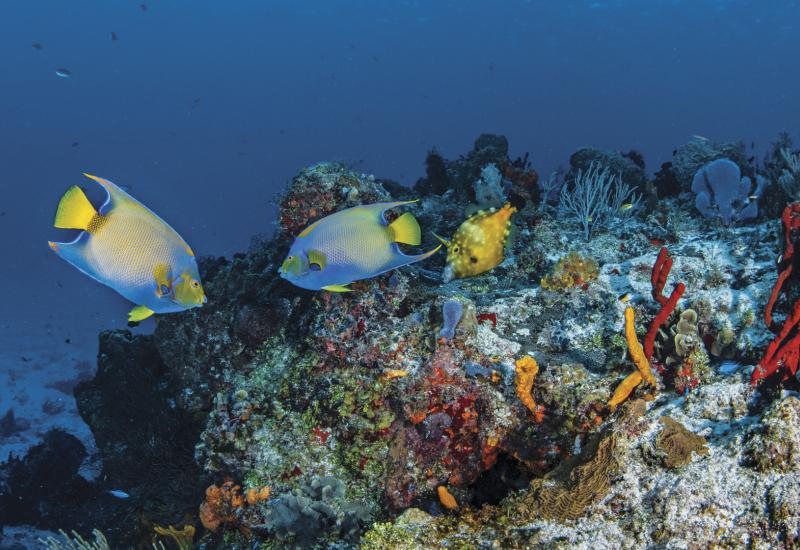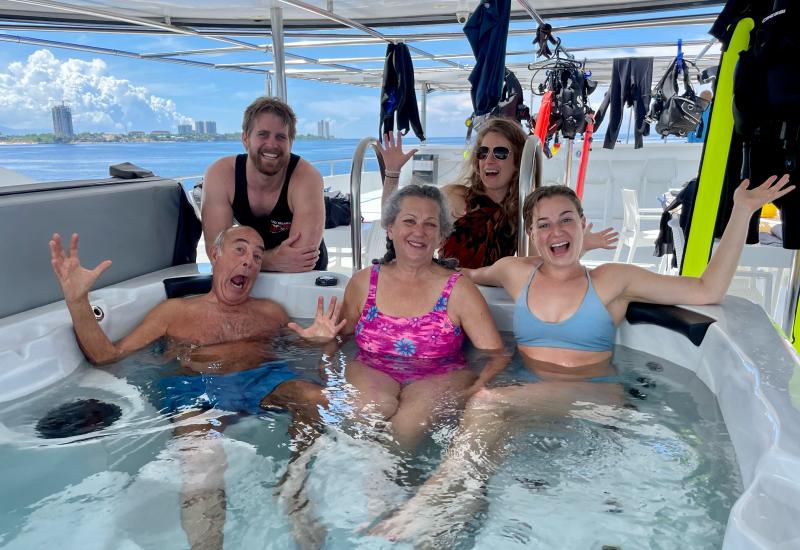A Liveaboard Trip of A Lifetime
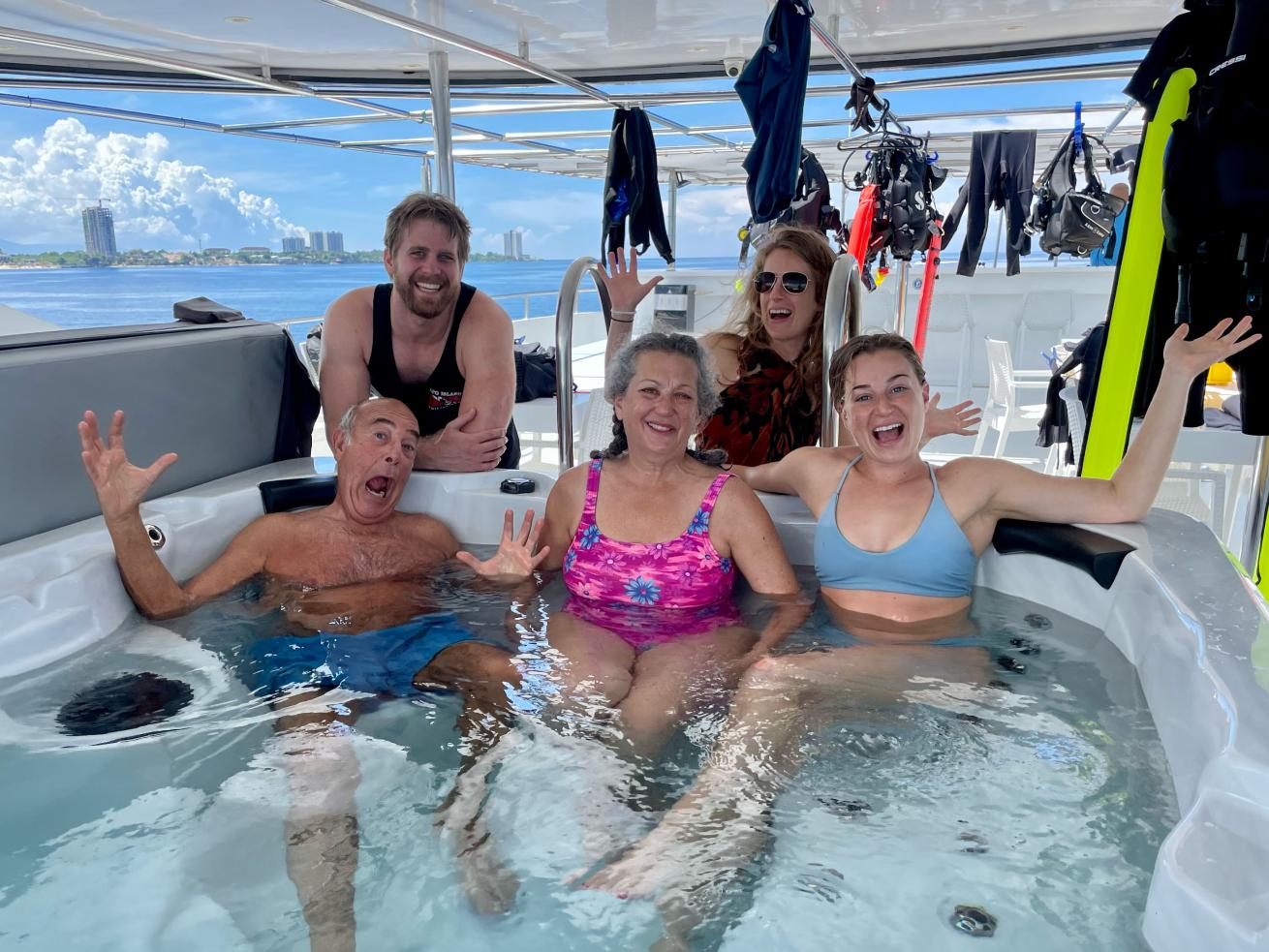
Ariella SimkeThe author and her family relax in the hot tub aboard Philippines Aggressor after a full day of diving.
Sitting next to my dad on a plane from Manila to San Francisco, I read the last paragraph of When Breath Becomes Air by Paul Kalanithi and closed the book, tears streaming down my face. I felt my dad’s hand find my own, comforting me. “You’ve got to read this book,” I said. “It’s about a guy going to medical school when he finds out he has lung cancer.”
We got home, and I left the book with my dad. He never finished it, but he did make an appointment with an oncologist himself. We had been diving together the entire week in the Philippines, and he knew something was wrong. His coughing had progressed from throat clearing to dry hacking. The doctor called to deliver the news: It was lung cancer.
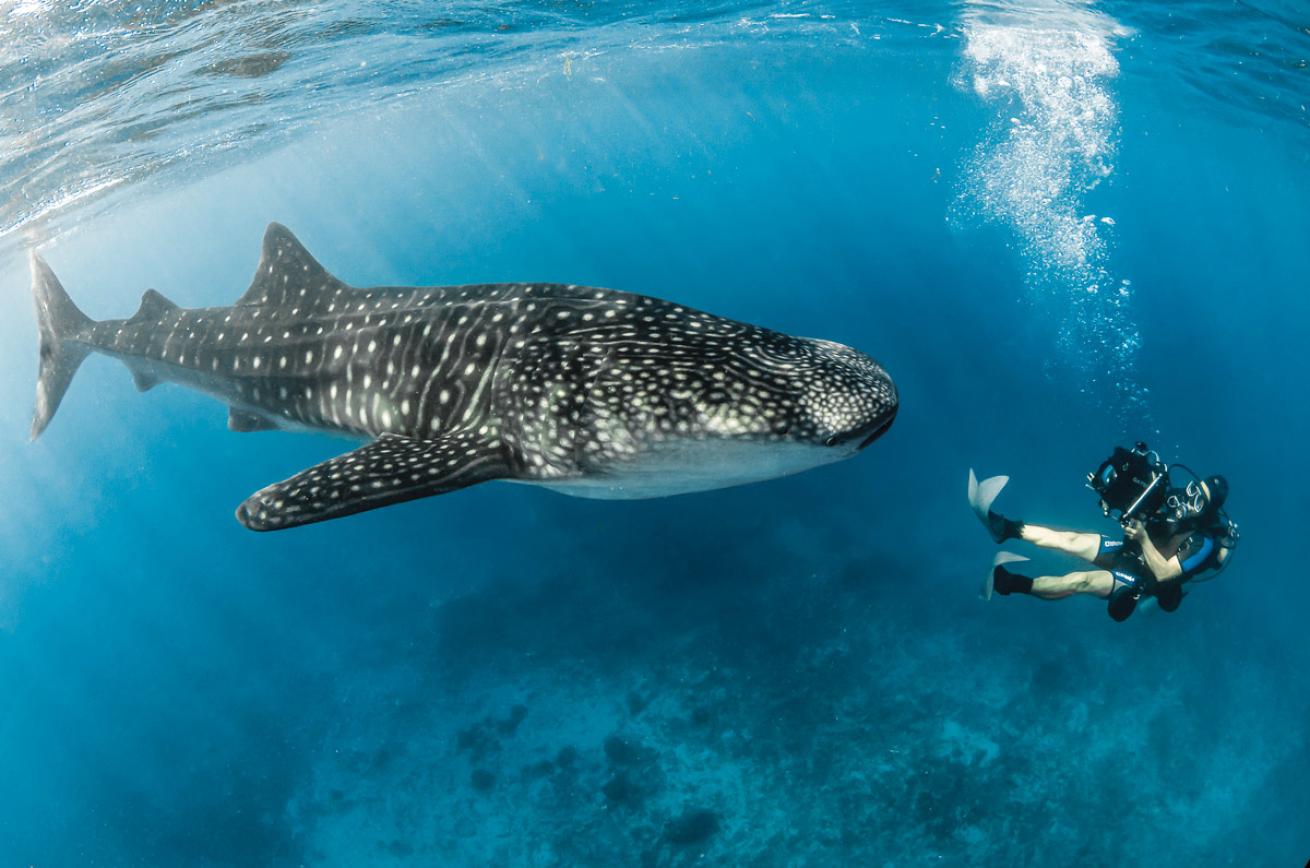
Alex TyrrellWhale sharks patrol the productive waters around the Philippines, giving divers lasting memories.
Two years and two surgeries later, Dad made it through with half of the lung tissue he’d had when he was diagnosed—and none of the cancer cells. With his illness gone and pandemic restrictions lifted, we discussed the possibility of another dive trip in June 2023—our first family trip since my sister Leah and I were certified as kids.
In 2004, Leah (then 12), and I (10) got dropped off at the pool once a week for our junior open water course. At the end of each class, we’d launch out of the pool and run straight to the vending machine to buy an ice-cold Vanilla Coke to share in the hot shower as we rinsed away the chlorine. After our checkout dives, we quickly went our separate ways—me full throttle into the dive industry as an instructor, and her into chemistry labs and away from tanks and neoprene. A few years back, Leah decided to do a ReActivate Scuba Refresher program and has since become my dive buddy once again.
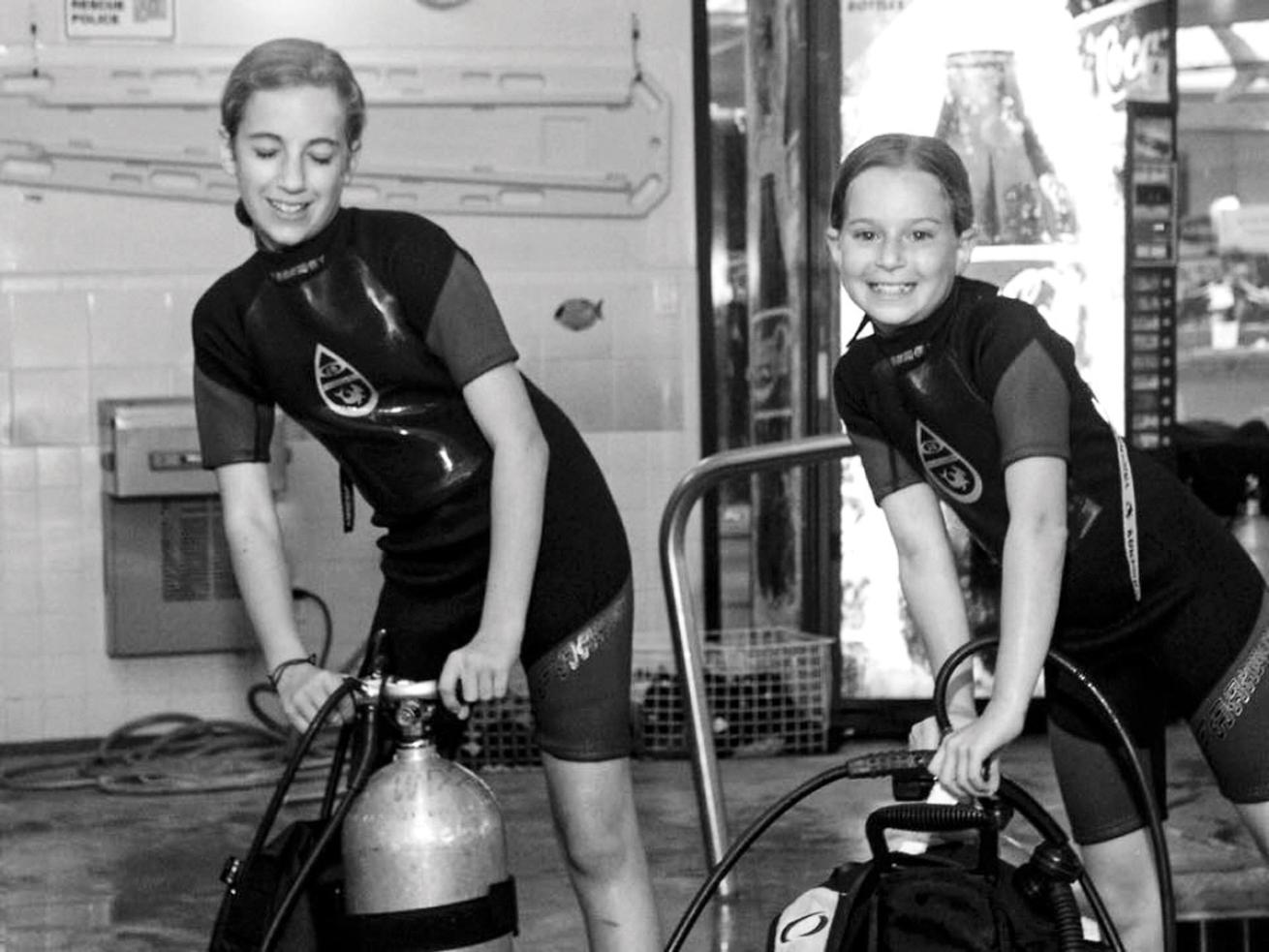
Ariella SimkeThe author and her sister during their junior open water course in 2004.
We decided that returning to the Philippines for our upcoming dive trip would bring things full circle, and as our plans came together, we considered how Dad’s health would play a role. “I think this one is going to be my last,” he confided in me. At 74, he was preparing to hang up his fins. The idea of getting back in the water, while exciting, was scary too. After many discussions with Dad’s doctors, we booked spots on Philippines Aggressor. The liveaboard was headed for the remote Tubbataha Reefs Natural Park—far from shore, cell reception, Wi-Fi or medical care, should anything go wrong with Dad’s health.
Fast-forward to June: My parents, sister, brother-in-law and I pull up to the dock in Puerto Princesa, where the 135-foot Philippines Aggressor waits. We aren’t sure what to expect for our first liveaboard experience, but the boat is glorious—all shiny decks and sleek glass—and it’s our portal to some of the most sought-after dive sites in the Philippines.
Related Reading: 5 Things I Learned Diving with My Family on a Liveaboard
As it turns out, we’re the only first-timers on board. One guest, a retired dentist, is clocking his 39th liveaboard this trip. But we all have one thing in common: We are eager to depart on Aggressor’s last trip of the Tubbataha season, which ends in late June.
Our luggage is whisked away to our respective rooms, and we’re left with the cruise directors, Talal and Antonio, who break the ice and put everyone at ease. By 8:30 p.m., the jet lag has strapped us to our beds in anticipation of an early morning. Through the porthole in my room on the lower deck, I watch the ocean cradle the boat as I settle in for the overnight passage to Tubbataha.
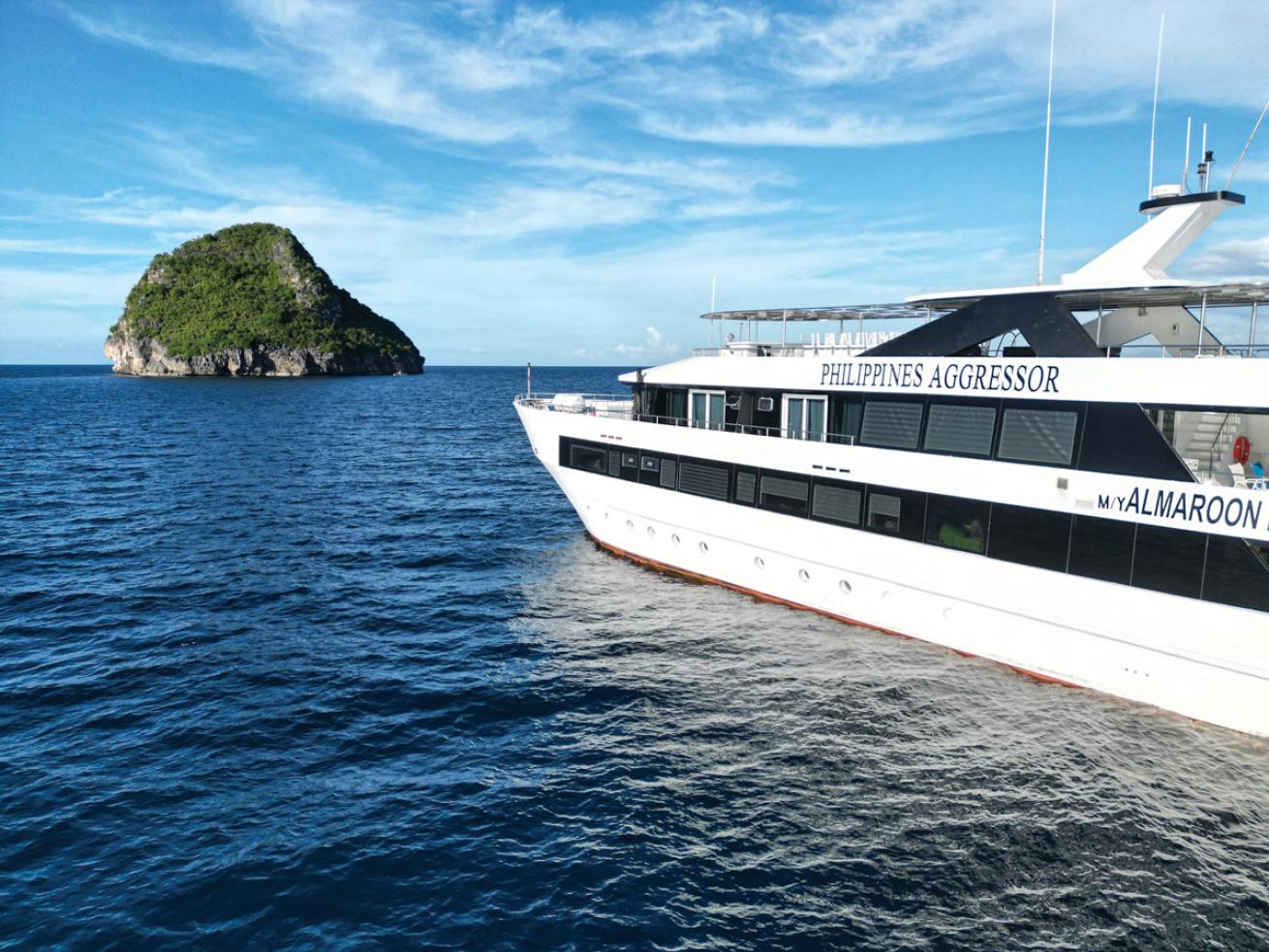
Courtesy Antonio TrigoThe 135-foot Philippines Aggressor visits remote sites in Tubbataha and Visayas.
At 6 a.m., I’m awoken by a knock on my door. The crew is up early, delivering hot beverages to each guest. I sip my tea and get myself ready for the long day of diving as we pull up to our first dive site on Jessie Beazley Reef, an emergent coral cay.
A week before I was born, in December 1993, Tubbataha was named a UNESCO World Heritage Site, so I find myself feeling a strange kinship with the reserve. The nearly 375-square-mile area is about 100 miles southeast of Puerto Princesa, in the middle of the Sulu Sea, and far from the reaches of civilization, trash pollution, and fishing pressure. With deep water and two atolls, the area is rich in marine life and prone to strong currents. There are too many species present here to count, and nearly 90 percent of the coral species found in the Philippines live in the waters surrounding our boat.
“DAD, IT’S TIME TO GET READY; WE’RE THE FIRST GROUP GOING OUT,” I TELL HIM. “I’M NOT GOING,” HE ADMITS. “I WAS NEVER PLANNING TO DIVE ON THIS TRIP.” PLOT TWIST. SHOCK AND DISAPPOINTMENT BUBBLE UP BEFORE I HAVE A CHANCE TO THINK. “WHAT ARE YOU TALKING ABOUT? WE’RE ON A LIVEABOARD. THAT’S ALL THERE IS TO DO!”
After a thorough safety briefing, we’re turned loose to prep our gear for our first dive. That’s when I notice Dad still in dry clothes. “Dad, it’s time to get ready; we’re the first group going out,” I tell him. “I’m not going,” he admits. “I was never planning to dive on this trip.” Plot twist. Shock and disappointment bubble up before I have a chance to think. “What are you talking about? We’re on a liveaboard. That’s all there is to do!” I rebuke. But it’s useless, his mind is made up. The rest of us load onto the RIBs and motor out a few minutes to the dive site. I squint at the upper deck, where Dad is waving us off. I wave back, trying to swallow my feelings of betrayal.
We do a negative entry off the 20-foot RIB. The low morning light has bathed the reef in a purply golden hue, and the water is clear. So clear that I can see Mom tinkering with her buoyancy across the reef and my brother-in-law Brandon looking surprisingly trim and comfortable. He’s been a part of our family for over a decade, but only recently joined us underwater as a certified diver a couple of months back.
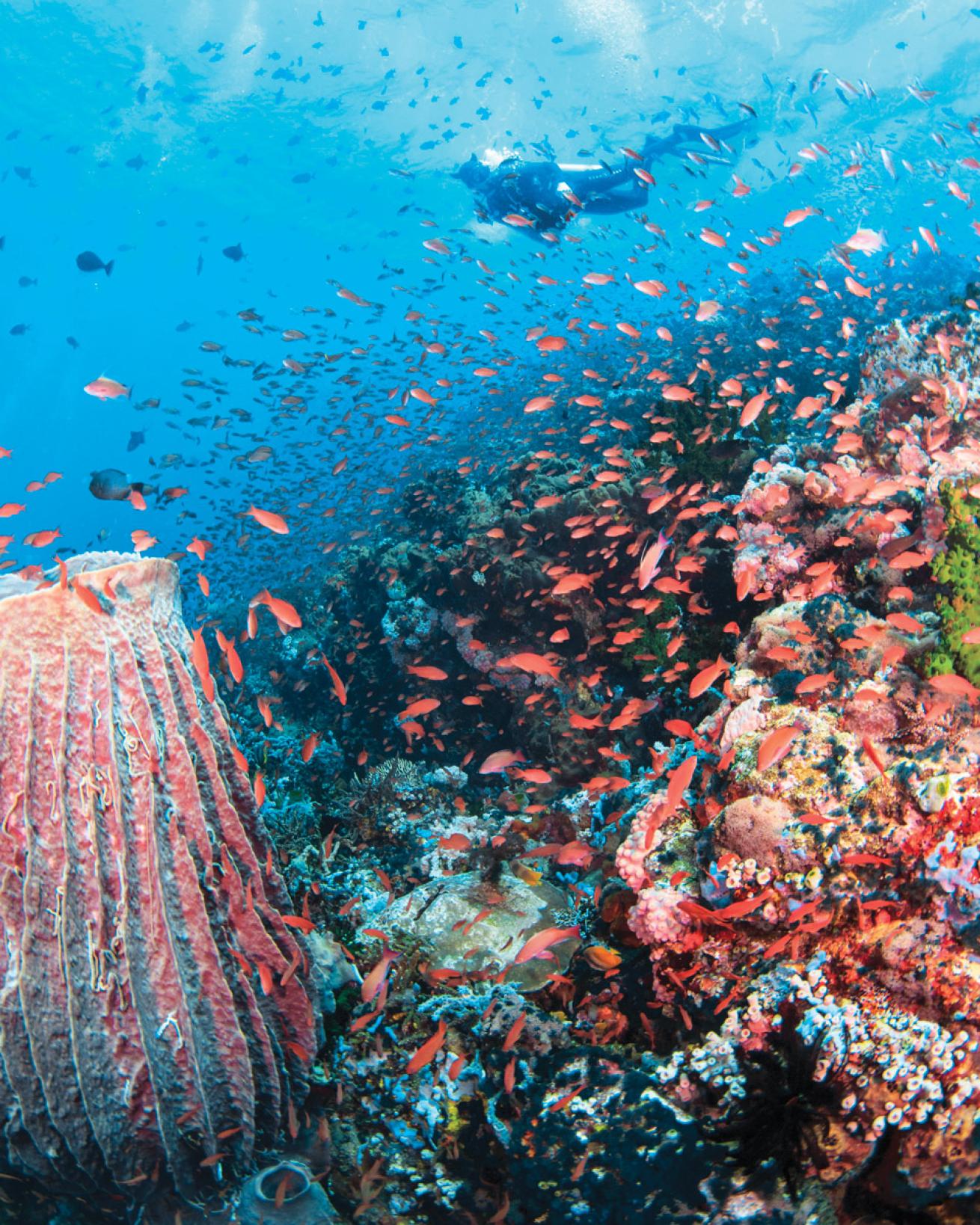
Lureen FerrettiClouds of orange and purple anthias overtake the buzzing reef.
After a few minutes underwater, my breathing falls into a familiar rhythm as I kick along a reef covered in some of the most colorful and healthy coral I’ve ever seen. I feel a tug on my fin and turn to see Mom enthusiastically pointing to a girthy tan trumpetfish wiggling by my left shoulder. I’m immediately transported back to my childhood dives with Mom.
She was always by my side, pointing out the magic of the ocean, stoking my curiosity and guiding me in my love for the underwater world. Diving with Mom again brings back a flood of positive memories that have sat in the back of my brain for ages. I smile and signal back a shaka before continuing on, taking in the rosy complexities of the morning reef.
IT’S HARD TO IMAGINE THAT TWO YEARS AGO I SAT IN A HOSPITAL ROOM WORRIED ABOUT LOSING HIM, AND TODAY WE’RE ACROSS THE GLOBE, UNDERWATER TOGETHER, WITNESSING WHAT SO FEW PEOPLE EVER GET THE CHANCE TO SEE.
Back on the dive deck afterward, we stand under the hot outdoor showers as the crew does all the hard work of shuttling our kits, swapping tanks, and handing us hot cocoa and a hot towel before we even make it up the stairs. I’m unaccustomed to this type of princess treatment, but I can feel myself quickly falling in love with it. I’m starting to see why everyone on our boat has returned for more. We chatter excitedly with the other guests, recounting what we saw. “Did you see the cleaning station?” “I saw a mushroom coral at least 8 inches across!”
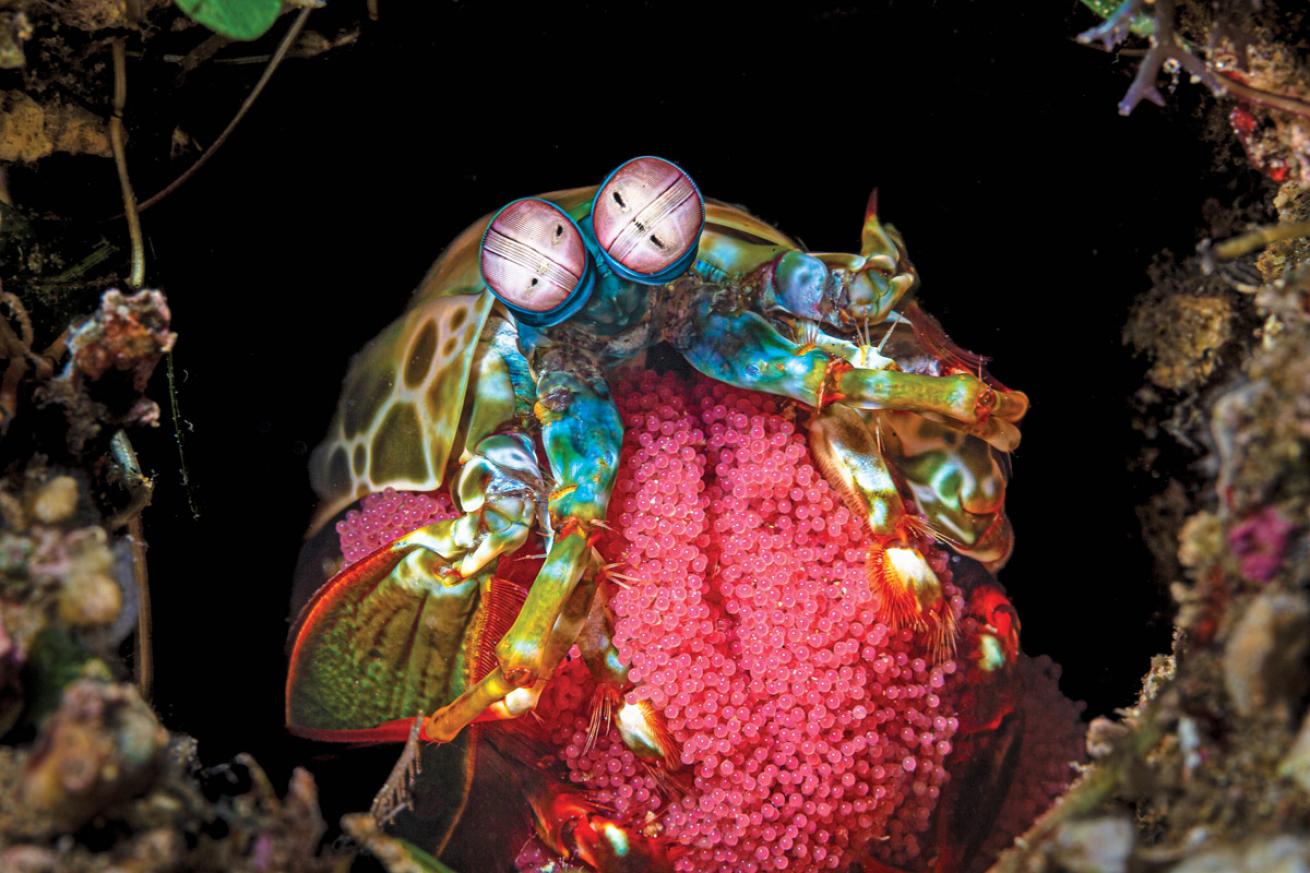
Jennifer PennerA psychedelic peacock mantis shrimp pops out from the muck.
A nap and a second cup of coffee prepare me for the next dive that morning, and I find the rest of my family already on the dive deck, including—gasp—Dad! In a dive skin! The Aggressor staff had sensed Dad’s hesitation and assigned him a divemaster named Mostafa so he would be more comfortable getting in the water. Mostafa pulls me to the side. “He didn’t want to dive because he’s worried if he has a problem, it will ruin the trip for everyone,” he whispers.
My heart immediately softens. Dad didn’t mean to disappoint me; he was trying to make sure we would all enjoy ourselves. “He’d sit in a cardboard box with no windows for 10 days if it meant doing it with all of us,” Leah says, making me laugh. I’m feeling much more buoyant as we load onto the RIBs for the second dive, this time with the whole family accounted for and Mostafa in tow.
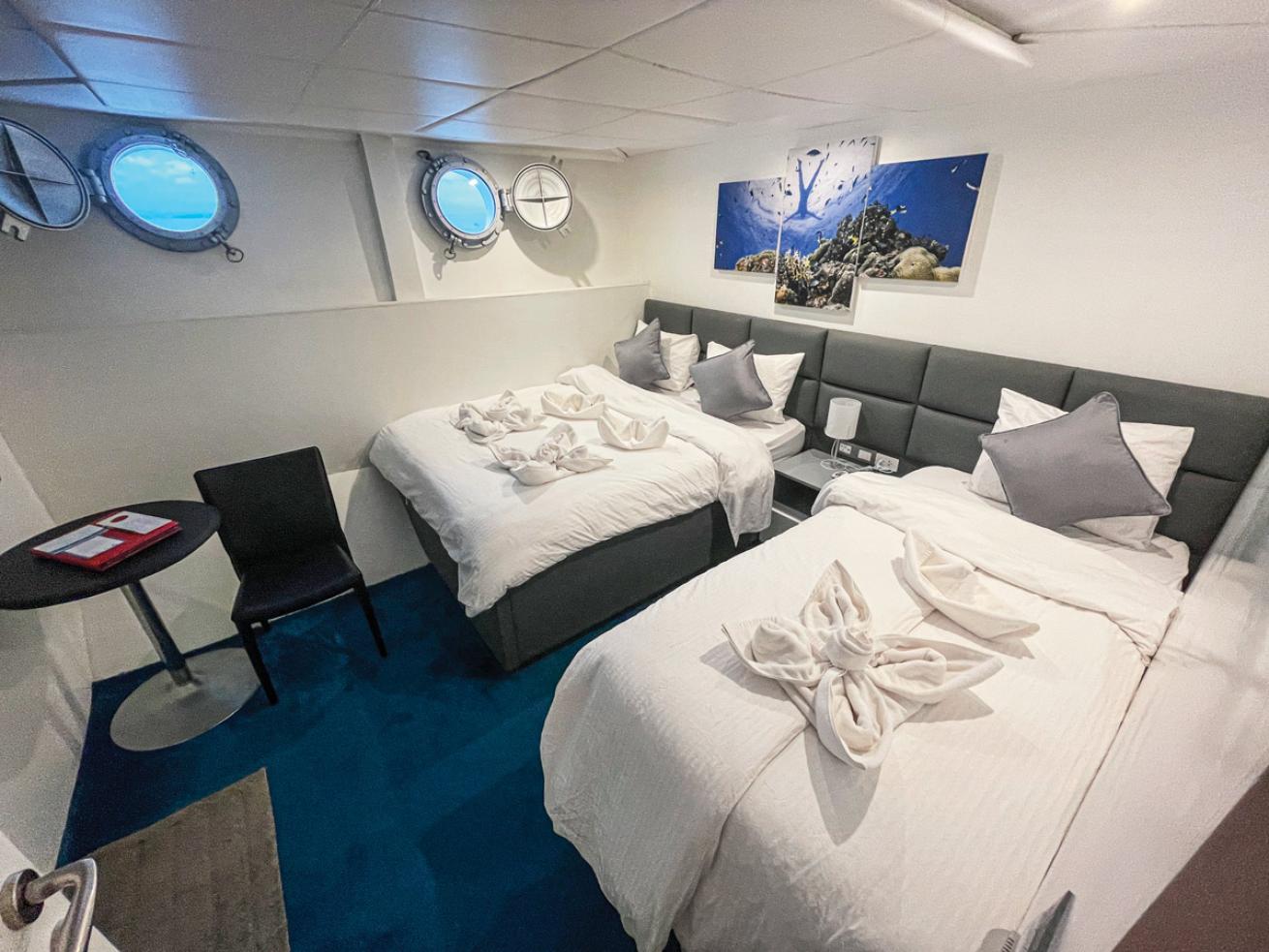
Courtesy AggressorA cozy room on the lower deck.
We drop in 40 feet of water on a massive wall. Mostafa stays with Dad the entire time, checking in to see how his lungs feel and how he’s doing. The rest of the family can’t help but watch with anxious hypervigilance. But he looks like he hasn’t been out of the water for even a day, relaxing into neutral buoyancy and looking around slowly. “I love you,” I signal to him and watch the corners of his eyes crinkle. He blows me a kiss.
I’m sentimental to a fault, and down here, with nothing but my thoughts, I become overwhelmed with emotion. It’s hard to imagine that two years ago I sat in a hospital room worried about losing him, and today we’re across the globe, underwater together, witnessing what so few people ever get the chance to see. While tearing up, I almost miss the school of jacks circling our bubbles on the safety stop.
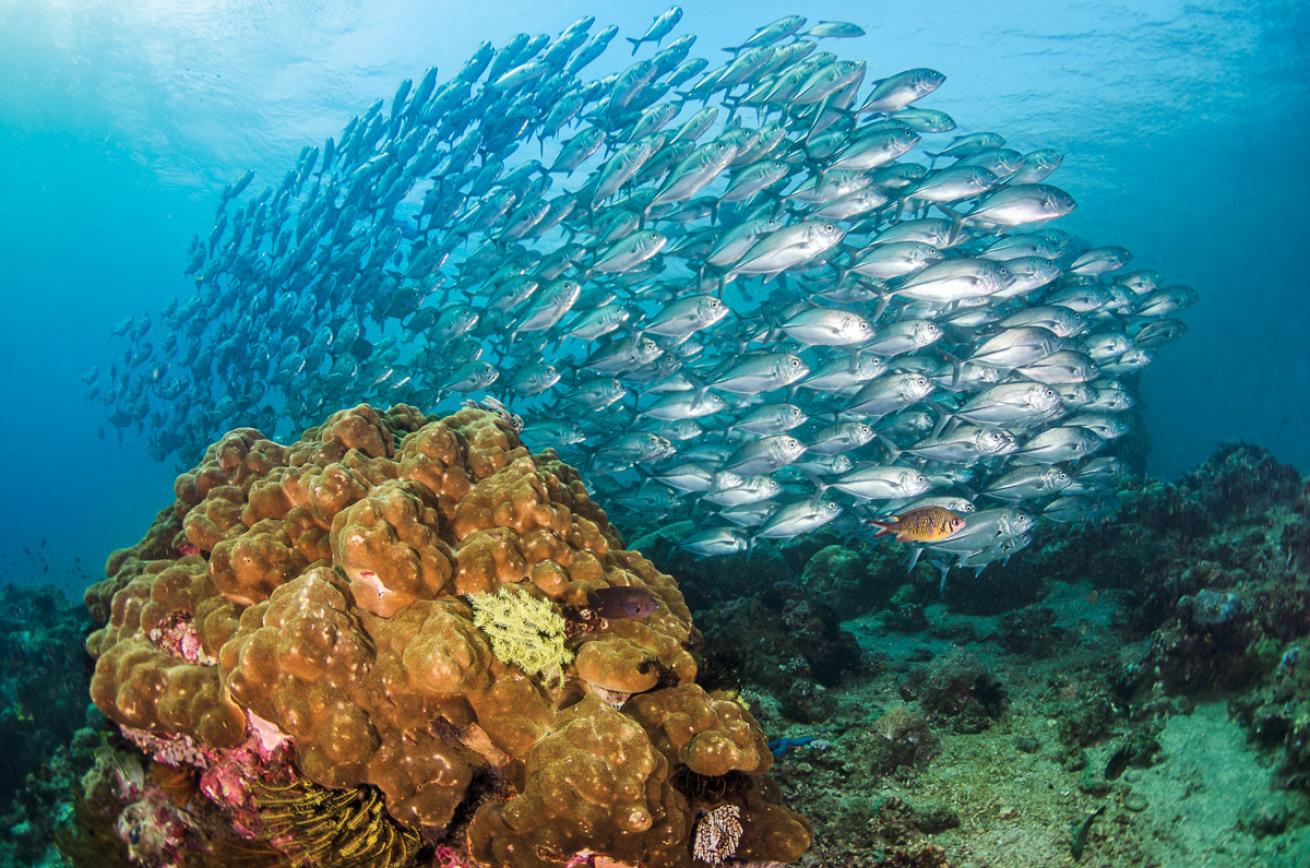
Alex TyrrellA school of jacks pours over the shallow reef.
We ascend, and Dad surfaces next to me. The regulator comes out of his mouth and the exclamations follow. “I’ve never seen anything like that before in my life! There was a cloud of fish above me, oh man!” He claps Mostafa on the back, grinning so wide. After that dive, Dad and Mostafa are inseparable. Laughing over meals, sharing stories, and diving when Dad feels like it, usually once a day. Dad’s newfound comfort puts us all at ease, and we quickly settle into a rhythm of diving, eating and sleeping as the liveaboard way of life becomes familiar.
The next morning starts with sunrise yoga on the upper deck, followed by tea and a briefing. I braid Leah’s hair as we listen to Antonio’s site descriptions complemented by Talal’s expertly drawn maps on the whiteboard. Leah works on her PADI Advanced Open Water Diver course with Talal, and with each dive, she becomes more confident and relaxed, trying new skills and gaining experience quickly. Brandon and I agree to go for Aggressor’s famous Iron Diver award by completing all 33 dives offered during our 10-day itinerary. After the last dive of the day, we crack a beer, mingle with the other guests over dinner and retire early, satiated, exhausted and thoroughly impressed with the wonder of the ocean.
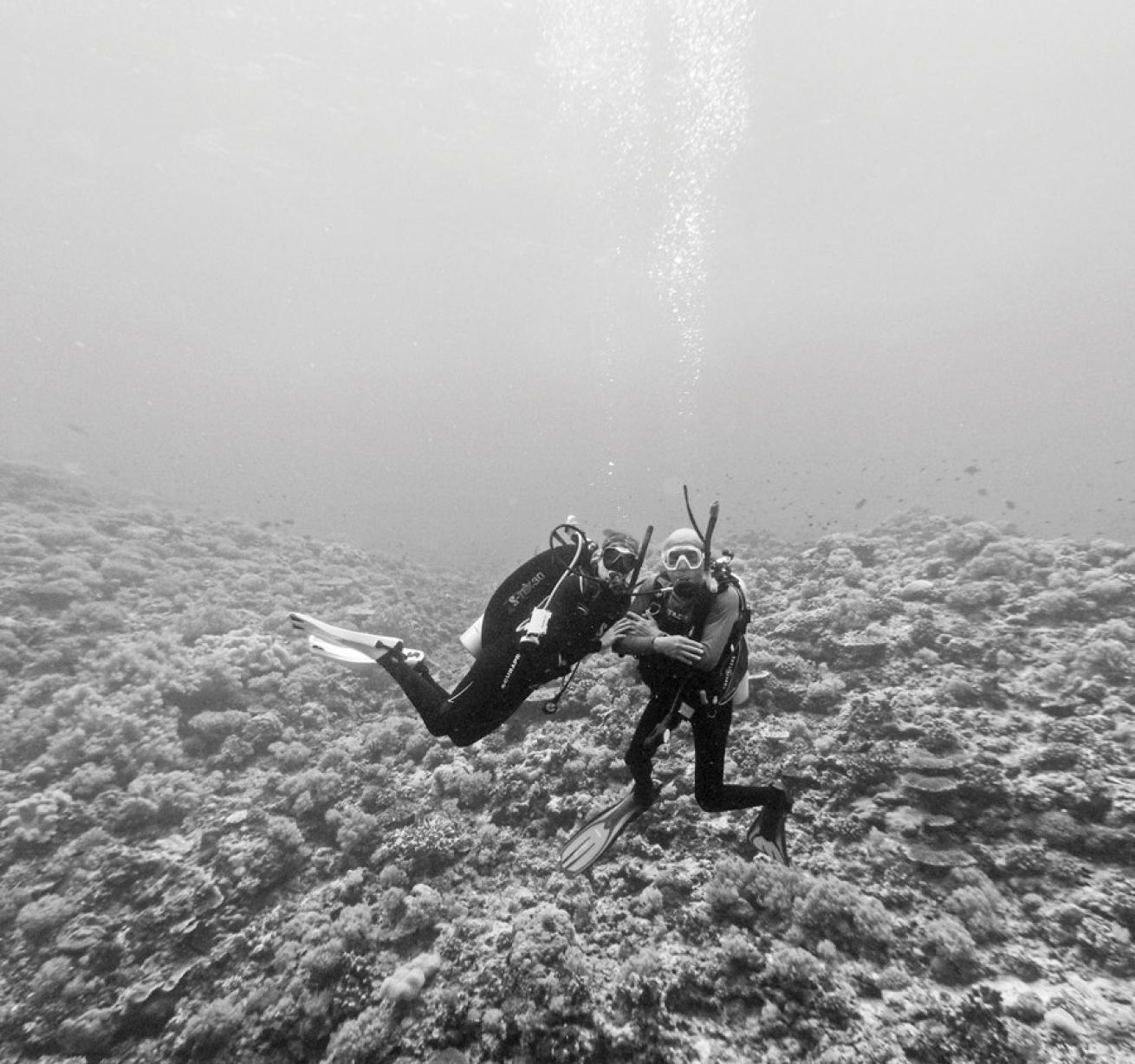
Ariella SimkeThe author and her dad hover over the blue on a deep wall dive.
On our third day in Tubbataha, we drop in on the site Washing Machine. The wall dive is filled with rainbow fish, and the visibility is so clear that the 100 feet of water between us and the surface looks more like 30. I swim off the reef so I am hovering over the endless blue. Spreading my arms in one of my favorite dive rituals, I imagine I’m flying.
The 1-knot current suddenly switches direction, and I’m sent back the way I came. I fin back to the reef and take in the colors and textures as I ride the current. The abundant soft corals look like fields of overcooked spaghetti swaying in the flow. Others resemble flowers cut from lace, or oversize chanterelle mushrooms covered in shag carpet. Sea fans in every color explode from the wall and stretch toward the blue.
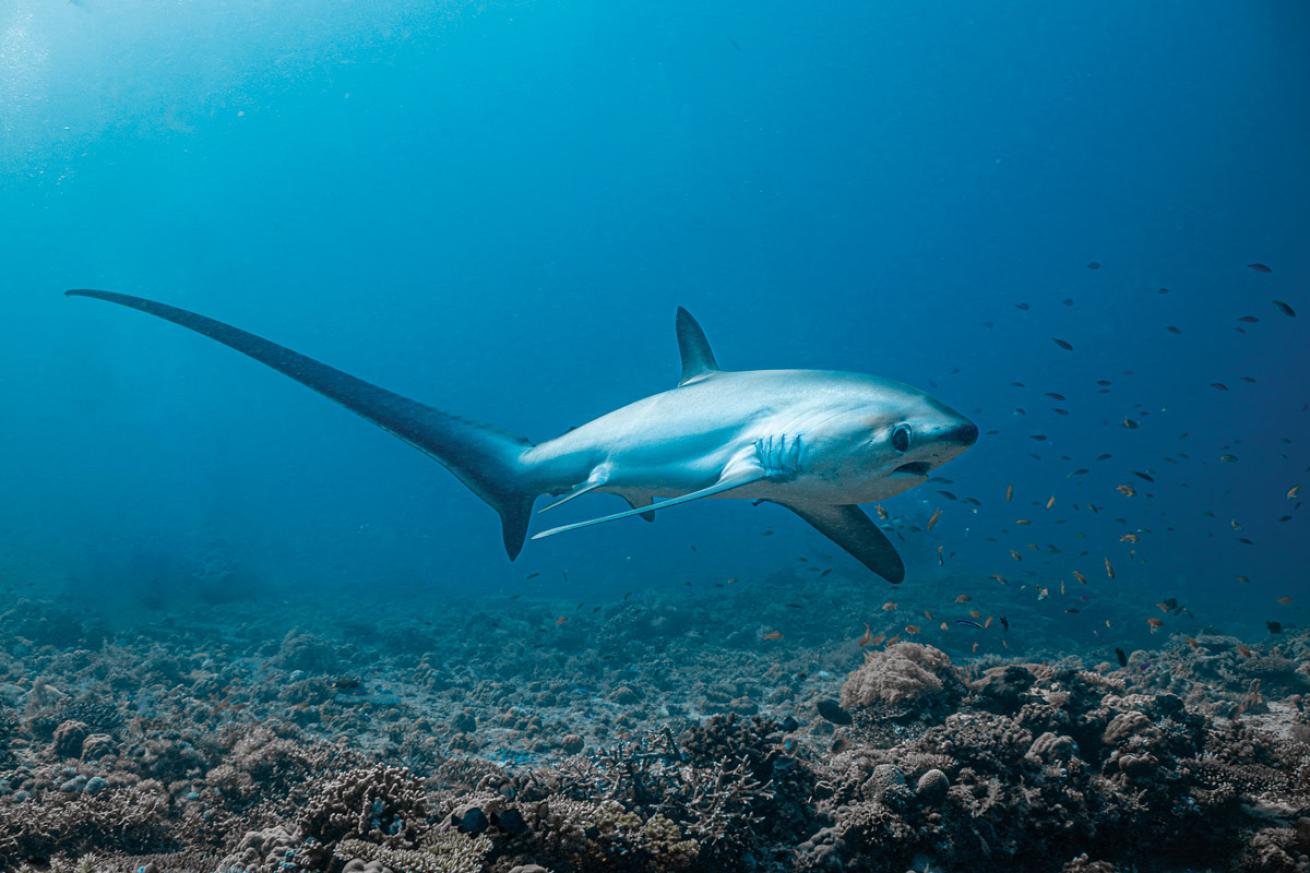
Alex TyrrellThresher sharks come to get clean in Malapascua.
Suddenly, a large shadow appears. Looking up, I spot a whale shark barreling toward us. I can’t contain my squeal of joy and hastily point the monster out to my buddies. We watch it slowly disappear into the blue while we dance in celebration.
I’m sad to leave Tubbataha, but the promise of parts unknown in Visayas, the location of the second half of our itinerary, pushes me forward. Our first stop is Cagayancillo: “Islands in the middle of nowhere,” says Antonio, where we are warned that we’ll see much less life. “Cagayancillo is not protected like Tubbataha,” says one of our Filipino dive guides. “They fish for everything here except sea fans; if people could eat those, they’d be gone too.” We cruise on, stopping at Apo Island marine reserve, a tiny volcanic island off Dumaguete where the colors are rich and the water is as clear as air, and Dauin, where we’re delighted by tiny wonders in the muck, before arriving in Malapascua on day nine, where thresher sharks patrol the waters.
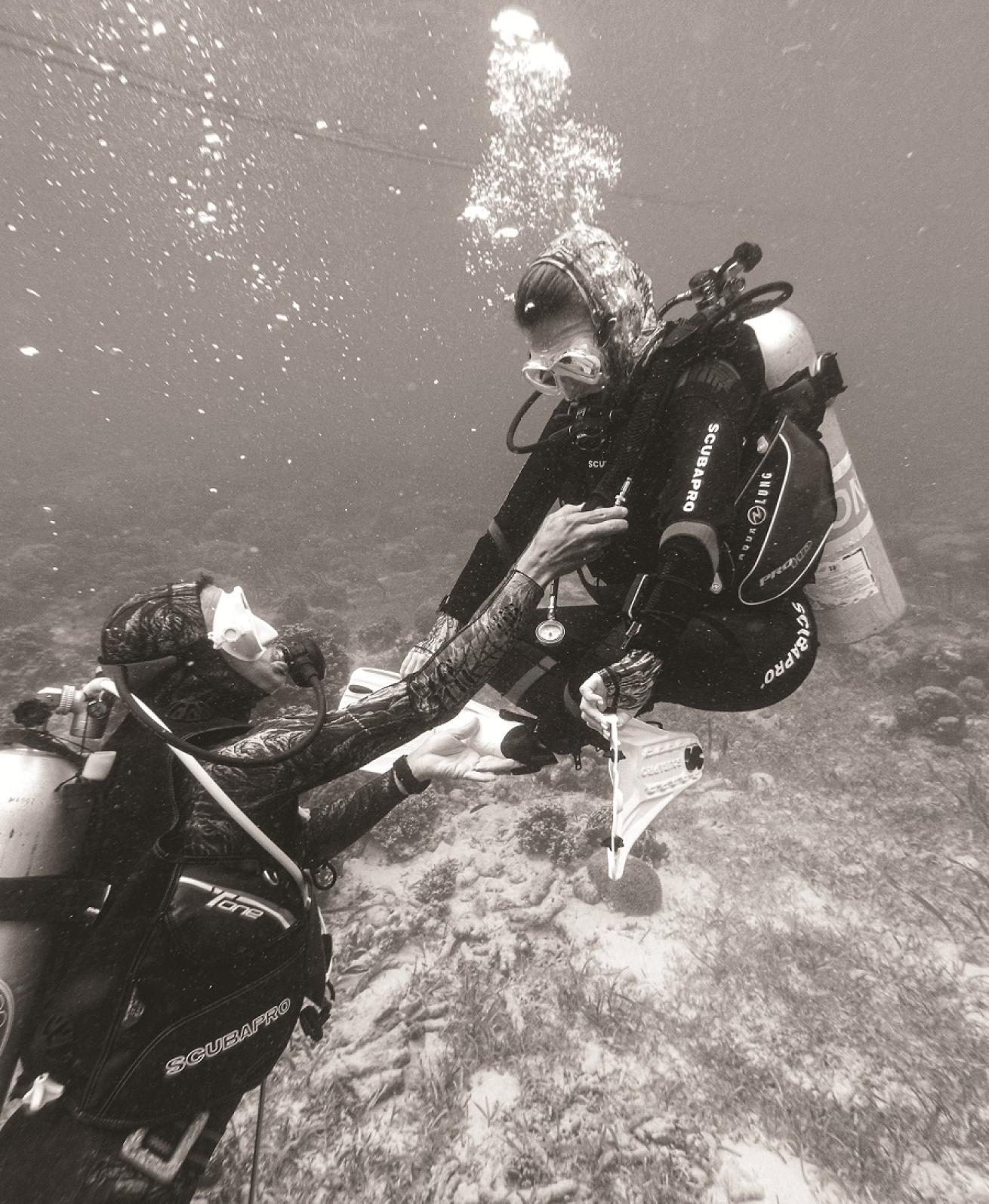
Ariella SimkeTalal helps Leah with her neutral buoyancy.
Their skin looks like mercury, I think as a metallic 3-foot shark glides by mere feet from me on our first dive of the day. Threshers, with their doe eyes and silvery smooth bodies that stretch into elongated tails, couldn’t look intimidating if they tried. In Malapascua, one of the only places where divers can reliably see them, the sharks arrive in droves for a touch-up from the cleaner wrasse parked along the reef. “Stay close together as a group and as close to the reef as possible without touching the fire coral. No lights. They’ll get curious and think maybe we are prey,” Antonio briefs us. We hover close to the reef as five or six threshers circle us as if on a track. They disappear and then reappear just as quickly—their skin catching the light like a mirror, mouths hanging open as if they had just witnessed a graphic car accident. Their dark tails, which they use like a whip to stun prey, swish with a pulsing gelatinous rhythm. We stay where the threshers are congregating until the area becomes crowded with other divers, then move on to find a more secluded zone.
“DID YOU ENJOY YOURSELF?” I ASK HIM. “VERY, VERY MUCH,” HE SAYS. “YOU KNOW, YOUR MOM AND I WERE THINKING… MAYBE ANOTHER FAMILY DIVE TRIP NEXT YEAR?”
Related Reading: World's Best Destinations for Underwater Photography
On the dive deck after our second 80-minute dive, Leah and I stand under the hot water, letting it melt the salt off our skin. Instead of Vanilla Coke, we’re handed ice-cold sweet tea to sip on. The sugary tea brings us back to life under the hot sun. I feel like we’re just starting to get into a groove, but with only one more diving day, we’re already at the end.
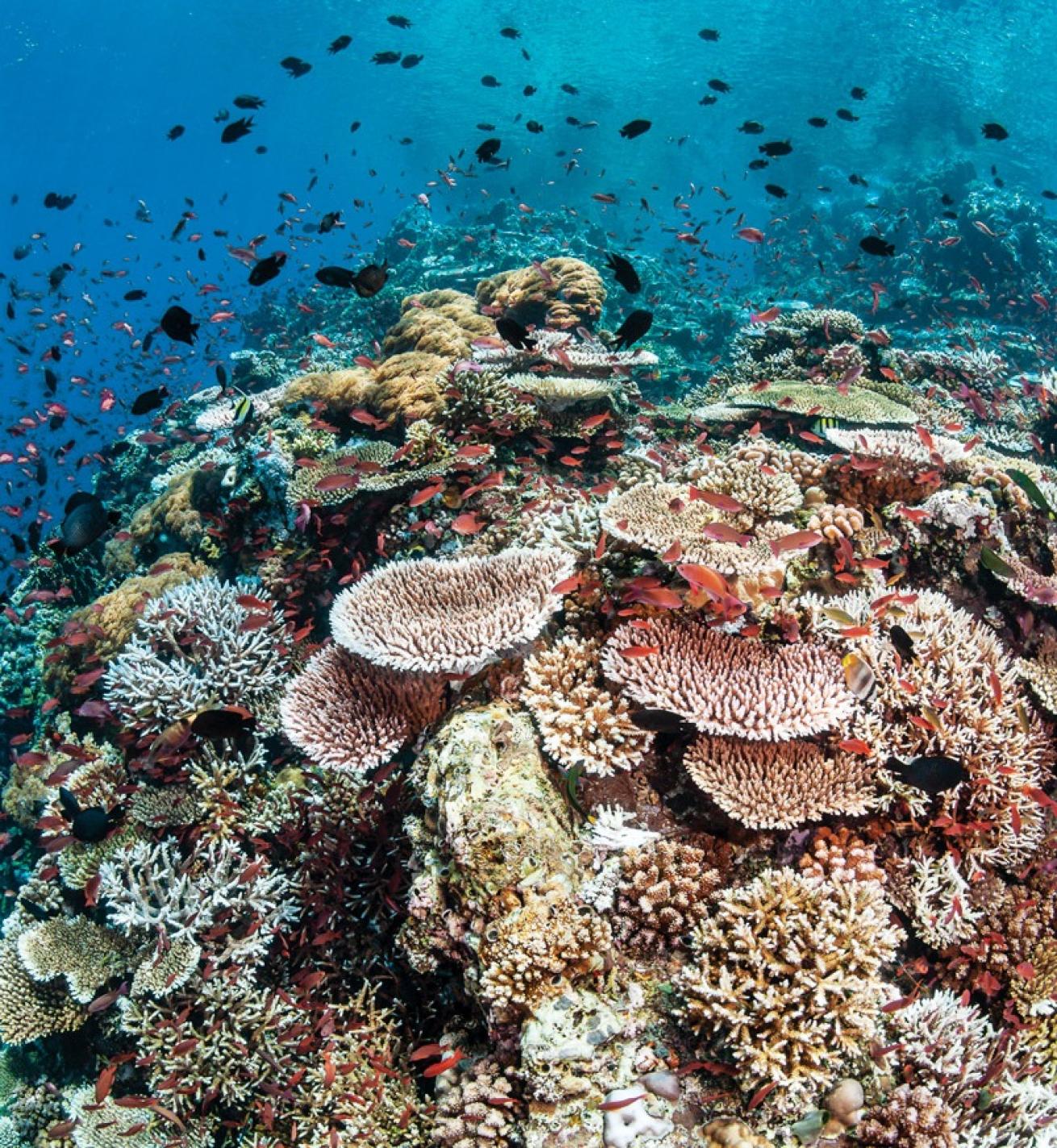
Alex TyrrellA lively reef bursts with color
We spend most of our last day in the shallows at Olango Island in central Visayas, watching Leah complete her peak performance buoyancy skills. Her skills have improved so much since our first dive on this trip, and her joy is contagious. We pass the time dancing and giggling until it’s time to come up. On the surface, we watch as our RIB approaches, holding onto the final moments in the warm water. “This is my happy place,” Leah tells me. I nod, feeling closer to her in that moment than I ever have before. We say our goodbyes and head back home, having experienced something new to all of us.
As soon as we step off the plane back in California, our busy lives resume, and we go our separate ways, back to work, responsibilities and day-to-day activities. But I can’t get the trip off my mind. I call up Dad for a chat on my lunch break one day. We reminisce about the adventure and all the diving Leah, Brandon and I have done since. “Did you enjoy yourself?” I ask him. “Very, very much,” he says. “You know, your mom and I were thinking… maybe another family dive trip next year?"
NEED TO KNOW
Water Temp
77 to 86 degrees
What to Wear
3 mm wetsuit
When to Go
Tubbataha season runs from March through June
More Info
Learn about Aggressor itineraries at aggressor.com

